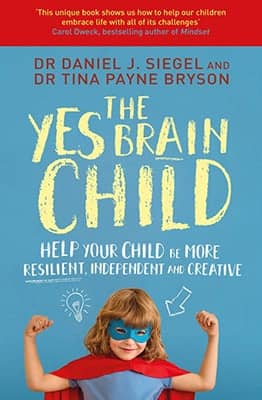Combating The Attention Spans Crisis In Our Students – Jennifer Oaten

It is no secret that attention spans have been steadily declining, especially among younger generations growing up immersed in digital technology. Dr Gloria Mark’s research shows that the average person’s attention span when using a digital device has plummeted from around two and a half minutes back in 2004 to just 47 seconds on average today – a dramatic 66% decrease over the past two decades.
This dramatic shrinking of attention spans has significant implications for how students learn and retain information in the classroom. Nobel laureate Herbert Simon noted decades ago, “A wealth of information creates a poverty of attention.” The endless stream of digital stimuli and notifications vying for our focus has led to a brain that is wired for skimming and quick switching rather than patient, immersed learning.
"A wealth of information creates a poverty of attention."
Herbert Simon 1977
The Consequences of Shrinking Attention Spans
The dramatic decline in attention spans documented by researchers does not just represent an interesting data point – it has very real and concerning consequences for student learning and wellbeing.
First and foremost, the inability to focus for sustained periods makes it incredibly difficult for students to engage deeply with academic content. Whether it is following along in a lecture, reading complex textbooks, or working through challenging problem sets, the constant mental switching and fragmentation erodes their capacity for deep, meaningful learning.
Studies show that students with shorter attention spans tend to perform worse on tests, struggle to retain information long-term and have a harder time connecting disparate ideas into cohesive understanding. This negatively impacts not only their grades but also their actual understanding and proficiency in the subject matter.
Beyond academics, the attention span crisis also takes a toll on students’ mental health. The elevated stress levels and cognitive fatigue associated with persistent digital distraction can contribute to increased anxiety, depression, and burnout. When the brain is constantly in a state of overdrive, trying to reorient between different stimuli, it becomes increasingly difficult to achieve the calm, focused mindset needed for optimal learning and wellbeing.
The repercussions only compound over time as young people’s brains become accustomed to the instant gratification and rapid context-switching of modern technology; they can lose the ability to tolerate boredom, delay gratification, and engage in deep work skills that are essential for long-term success, both in school and in their future careers.
Ultimately, the attention span crisis represents a serious threat to the academic achievement, cognitive development, and mental health of students across all year levels. By understanding the gravity of this issue, educators and parents can be further motivated to prioritise strategies that help students regain their powers of focus and concentration.
The Science of Attention
Researchers have identified several primary types of attention that people exhibit throughout the day:
1. Focused attention: The ability to respond discretely to specific sensory stimuli and concentrate on a single task or object, filtering out distractions.
2. Sustained attention: The ability to maintain focus on a task for a continuous period of time without becoming distracted.
3. Selective attention: The ability to focus on a particular stimulus while tuning out irrelevant stimuli in the environment.
4. Alternating attention: The mental flexibility to shift focus back and forth between different tasks or aspects of a task.
5. Divided attention: The capacity to focus on and respond to multiple stimuli simultaneously, such as driving while talking on the phone.
The problem is that modern students are spending far more time switching between digital distractions like browser tabs and social media. Studies show this constant context switching leads to increased stress, more errors, and slower performance as our brains struggle to reorient and refocus each time we jump between different inputs.
Strategies for Educators
So, what can be done to combat this attention span crisis in our classrooms? Educators and schools need to employ a multi-pronged approach:
1. Engaging Information Delivery: Using interactive techniques like storytelling, hands-on activities, and collaborative learning can help keep students actively engaged rather than passive recipients of information.
2. Bite-Sized Learning: Microlearning formats like videos, podcasts, and gamified content can match students’ preferences for short, focused bursts of information. However, this should be balanced with longer-term deep dives to build conceptual understanding.
3. Identifying Triggers: Help students recognise their personal digital distractions and develop strategies to minimise them, such as putting phones in another room during study time.
4. Attention Management Techniques: Teach students attention-boosting skills like single-tasking, setting clear goals, and taking regular breaks to “aerate” the brain.
5. Brain Breaks: Incorporate regular physical activity, mindfulness practices, and other rejuvenating activities to help students recharge their cognitive resources.
By understanding the underlying neuroscience behind attention and addressing the unique challenges facing today’s digitally immersed students, educators can help reverse the trend of declining focus and equip young people with the concentration skills needed to thrive in learning.
Strategies for Parents
In addition to the strategies educators can implement in the classroom, parents play a crucial role in helping students overcome the attention span crisis. Here are some key steps parents can take at home:
1. Model-Focused Attention: Children learn by observing the behaviours of the important adults in their lives. Make a conscious effort to minimise multitasking and distractions when interacting with your kids. Demonstrate what it looks like to engage deeply with a task or activity.
2. Limit Screen Time: The Australian Screen Time Guidelines recommend:
- No screen time at all for children under 2 years old.
- 1 hour maximum per day for children aged 2-4 years.
- 2 hours maximum per day for children aged 5-17 years.
These time limits do not include the screen time spent on educational activities.
The guidelines emphasise limiting overall screen time and having tech-free times, like during meals and before bedtime.
3. Encourage Offline Hobbies: Pursue activities that don’t involve screens, like reading, board games, doing arts and crafts, or exploring nature. These hands-on experiences help strengthen focus and concentration skills.
4. Incorporate Brain Breaks: Just like at school, build in time for your kids to get up, move around, and give their minds a rest. A short walk, some light exercise, or a fun brain teaser can help re-energise their attention.
5. Teach Time Management: Help your children learn to prioritise tasks, break larger projects into smaller steps, and use tools like schedules and timers to stay on track. These self-regulation skills are crucial for maintaining focus

The Crucial Role of Sleep
In addition to the strategies outlined above, ensuring your children get adequate, high-quality sleep is absolutely crucial for supporting their attention and focus. Many parents may not realise just how critical sleep is for cognitive performance.
Studies show that when students accumulate “sleep debt” – the difference between the amount of sleep they need and the amount they actually get – it has a direct negative impact on their attention spans. Dr Mark’s research found that the greater the sleep debt, the shorter a person’s attention span becomes.
The reason is that sleep plays a vital role in allowing our brains to recharge and consolidate the information and skills we have learned during the day. Without sufficient sleep, the prefrontal cortex – the part of the brain responsible for focus, decision-making, and impulse control – becomes impaired. This makes it exponentially harder for students to maintain concentration, retain new knowledge, and regulate their behaviour.
The Sleep Health Foundation recommends that school-aged children get 9 -11 hours of sleep per night. However, many students today average closer to 6 -7 hours due to late bedtimes, early school start times, and digital distractions before bed. By making sleep a priority at home, you will be giving your kids a powerful boost in their ability to focus, learn, and perform at their best. Well-rested students are primed for academic success.
Restoring Focus Through Collaboration
The attention span crisis facing today’s students is a complex challenge that requires a collaborative response from both educators and parents. By understanding the consequences on academic performance, mental health, and long-term cognitive development, schools and families can be united to prioritise strategies that help students regain their focus and concentration. Through evidence-based classroom techniques, healthy habits at home, and a concerted effort to minimise the distractions of modern technology, we can empower the next generation with the attention skills needed to thrive in learning and in life.
When schools and parents work together to address this issue from all angles, we give our students the best chance of reclaiming their powers of focus and excelling academically and personally. The stakes are high, but the rewards of restoring attention spans are immense.

Combating The Attention Spans Crisis In Our Students – Jennifer Oaten
It is no secret that attention spans have been steadily declining, especially among younger generations growing up immersed in digital technology. The average person’s attention span when using a digital device has plummeted from around two and a half minutes back in 2004 to just 47 seconds on average today – a dramatic 66% decrease over the past two decades.

Weekly Wrap Up: Term 2, Week 2, 2024
Week 2 has come to an end! This Weekly Wrap Up features highlights from Scuba Diving Club, the Sisterhood Series, and Boarding ANZAC Service.

Santa Maria Teams Shine in Term 1 Sports
Santa Maria had a huge number of girls in the IGSSA AFL and Volleyball competition with strong results for a number of teams.
- Featured, learningforlife
Author: Santa Maria College
Santa Maria College is a vibrant girls school with a growing local presence and reputation. Our Mission is to educate young Mercy women who act with courage and compassion to enrich our world. Santa Maria College is located in Attadale in Western Australia, 16 km from the Perth CBD. We offer a Catholic education for girls in Years 5 – 12 and have 1300 students, including 152 boarders.







